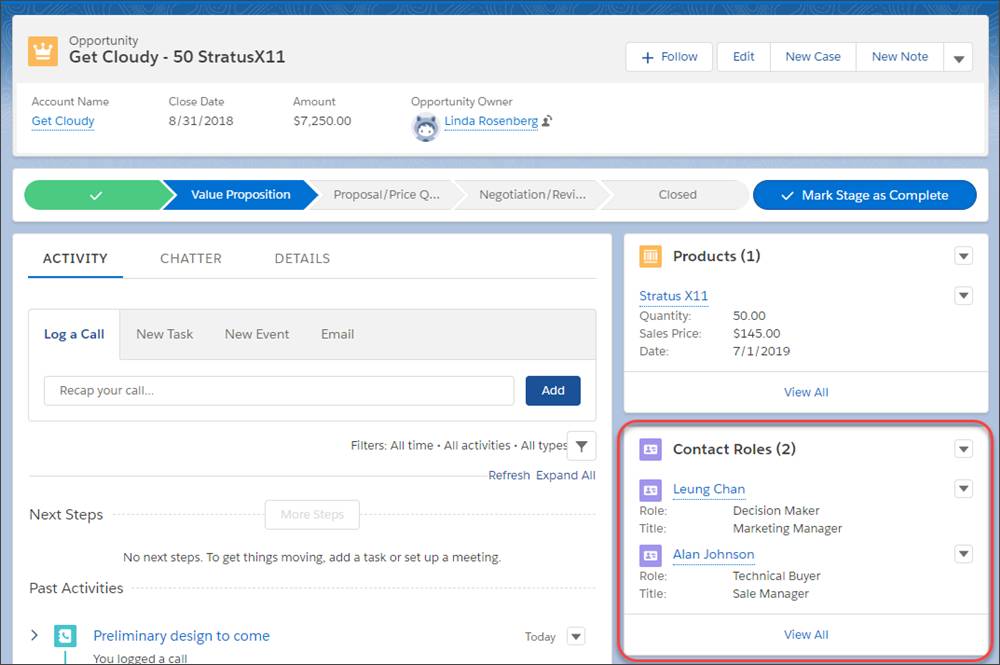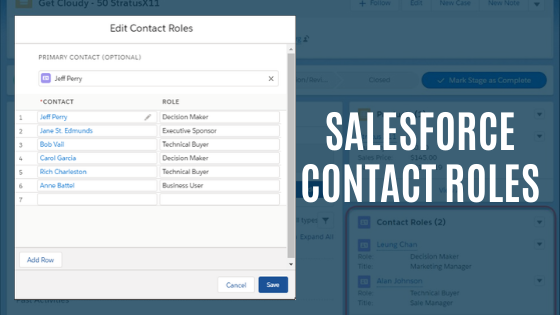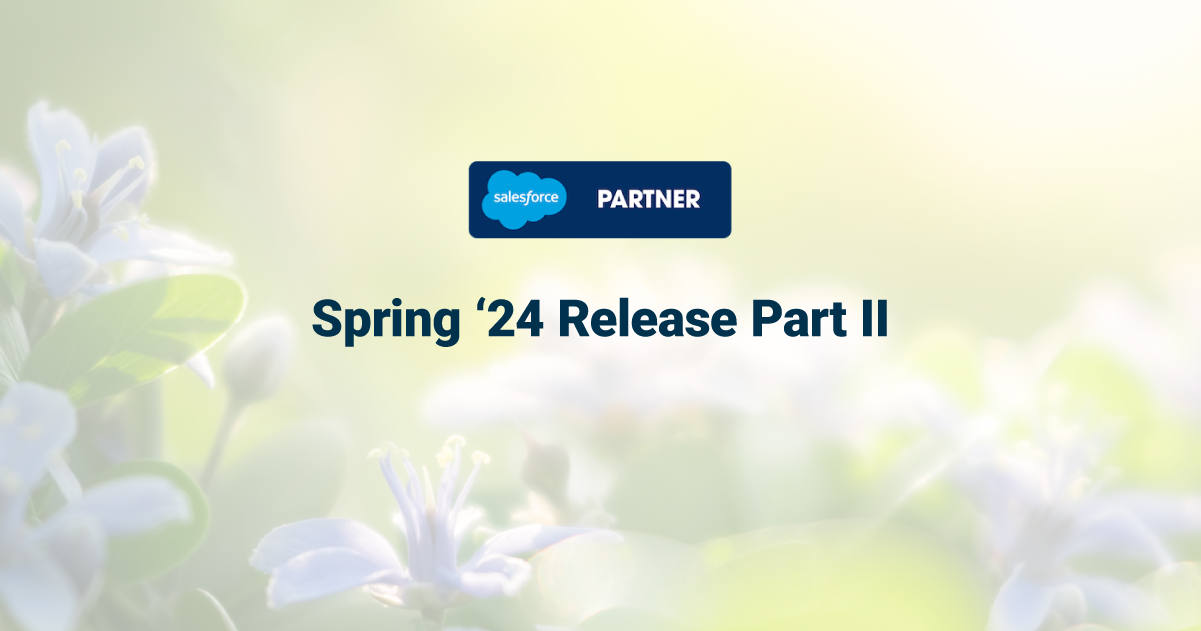Salesforce Contact Roles Are Essential to Improving Sales & Marketing
Do Salesforce Contact Roles Improve Sales?
If you or your sales teams use Salesforce, you know that it can help you manage sales opportunities, develop better relationships with your contacts, and improve customer retention. You may not be as familiar with Contact Roles and how they can make using Salesforce an even better way to increase sales.
Why Contact Roles are Critical to the Sales Process
The sales process has changed over time, especially as decision-makers have learned how to protect themselves from vendor contact. In addition, there are many more people involved in buying decisions.
It’s More Difficult to Reach Decision-Makers
In the past, the sales process was much easier to manage. The number of vendors trying to reach decision-makers was smaller, and decision-makers didn’t need to endure an overwhelming number of advertising and marketing messages. Salespeople could call and visit the person making buying decisions. Marketing could use email to contact that key decision-maker.
Today, decision-makers aren’t as open to contact from vendors. And, they can avoid contact with the outside world using assistants, caller ID, and filters for their email. Therefore, salespeople typically spend more time creating relationships with a variety of contacts in an account to identify and get in touch with people in a decision-making capacity.
The Number of People Involved in a Buying Decision is Higher
Closing a sale by talking to one decision-maker is virtually a thing of the past. Buying decisions are much more complicated for several reasons:
- Solutions to business problems are more complex and evaluating alternatives requires different types of expertise
- Businesses are more likely to experience uncertain financial situations, or at a minimum, they’re trying to squeeze everything they can out of every dollar spent
- Many business solutions have some level of interaction with a business’s technology infrastructure, which raises data security concerns that require IT expertise to evaluate
As a result, buyers will involve an increasing number of stakeholders in the decision-making process. A Gartner survey indicated that 75 percent of customers agree or strongly agree that people from a large variety of roles, teams, and locations participate in buying decisions.
Keeping track of all the people involved in a buying decision can be a challenge. Not only do salespeople need to identify specific individuals, they must also know what role each of the people plays in the decision-making process. For example, they need to know which individuals will influence the decision, which ones will try to block the decision, which ones will evaluate data security issues, and which ones will champion the idea of moving forward.
How to Use Salesforce Contact Roles
Using Salesforce Contact Roles best practices will allow you to manage the complexity in the buying decision process. Each of the individuals involved in the buying decision will need different information, depending on their role. Not only that, but the real buying decision process isn’t the neat sequential process that most buyer’s journeys describe.
For example, the process of building consensus within the buying team goes on throughout the buying process. Some people on the team may reach consensus while others are still gathering information. The process ends up looking more like a winding and looping track through the jungle rather than a straight-line event.
Your job is to ensure that the entire buying team comes to the same conclusion at the end of their evaluation, regardless of how they got there. You need to identify each individual’s role and cater to their particular needs.
Different roles exist in a prospect organization. You can customize the list of Salesforce Contact Roles to meet your specific sales environment. These are just some of the types of Contact Roles you may need to account for in Salesforce.
Decision Maker
Typically, this person has final authority to allocate the budget and approve the purchase. You won’t want to inundate the Decision Maker with all the information that others on the buying team need, but you do need to keep them involved throughout the process.
Gatekeeper
This person protects the Decision Maker from unapproved interruptions. You don’t want to send detailed product or service information to this person. But you need to know who they are and establish a good working relationship with them.
Influencer
Influencers can be lower-level employees who do the research for a purchase in order to brief the rest of the team. They don’t have purchase authority, but they will influence the Decision Maker. They need the right information to pass on to others on the buying team.
Business Influencer
In some situations, you’ll see higher-level influencers that review information from a lower-level researcher, and influence the decision based on their position in the organization. The Business Buyer will want to understand how your solution will improve business operations.
Technical Influencer
This is often a higher-level influencer that is responsible for understanding how your solution will affect the company’s technology. They will typically be the ones who are responsible for systems and data security.
Economic Buyer
The Economic Buyer may not make the final decision, but they will look at the return on investment (ROI) for a purchase, and will usually have a strong influence on the final decision. The Economic Buyer will be interested in case studies and financial information that describes how others have developed ROI for your product or service.
Project Manager
If your product or service requires a Project Manager within the prospect organization, identifying that person and their role will help you gain their support. They may not be able to influence the final decision, but they will be responsible for making your sale a success. You’ll want to make sure that the Project Manager has the information and encouragement they need to support your solution and make it work.
Salesforce Contact Roles are flexible enough to accommodate your specific sales situation. You will recognize at least some of the roles described above, and other roles may come to mind as you consider the buying teams you typically encounter.

Take the Working Opportunities Trailhead and earn your badge
The Benefits of Using Salesforce Contact Roles
When you use Salesforce Contact Roles, you’ll see a variety of benefits that will make your sales effort produce better results:
- Identify all players involved in a prospect’s buying process
- Understand the concerns of each of the individuals based on their role
- Alignment with an Account-Based Marketing (ABM) approach
- Tailor communication from marketing and sales to each stakeholder based on their role
- Track marketing campaign success with a link between the opportunity and any marketing campaigns the contact is added to
- Automatically log emails to the correct opportunity (requires integration with Salesforce and your email platform)
If you’re a salesperson, using Contact Roles will improve your results from using Salesforce. If you’re a sales manager, the challenge is to promote the use of Contact Roles among your sales team.
Ideas for Encouraging the Use of Salesforce Contact Roles
Change always generates some level of resistance. If you’ve already implemented Salesforce, you know that your organization had to make changes to ensure that adoption of the software. Acceptance is the key to driving Salesforce adoption, and the same is true when you’re focusing on driving adoption for one of its critical features.
If your organization has accepted Salesforce, then you probably used an implementation process that emphasized shaping attitudes through communication, education, involvement, and support. When it comes down to driving adoption of a particular feature of the system, you’ll need to focus on influencing behavior.
Make It Easy
Salesforce doesn’t require that a salesperson add a Contact Role to an Opportunity. However, with the Spring ’20 release, Salesforce has made it easy to populate Contact Roles through automation. Users simply have to add a Contact to a Lookup field on the Opportunity record. This can be enforced through a validation rule at a certain point in the sales process. For example, users shouldn’t be able to send a contract out until a Decision Maker is identified.
Include Contact Roles in Reports
When salespeople can see the result of their efforts, it will reinforce their desire to continue to use Contact Roles.
Include Contact Roles in Sales Meetings
Include discussions of the Contact Roles salespeople have (or haven’t) identified for their Opportunities. Proactively coach sales team members on Opportunities where there may not be enough understanding of the key contacts in the buying process.
Make It Fun
You may already be setting up healthy competitions that reward meeting or exceeding daily or weekly goals. You can include the same type of competition based on the number of Contact Roles that a salesperson uses. You can also reward the salesperson with the best use of Contact Roles, or the best story about how the Contact Roles helped in moving the buying process forward, in tracking campaign success, or in closing the deal.
Can Salesforce Contact Roles Improve Sales?
The short answer is yes.
As a salesperson, you know that your motivation to do something increases with the affect that action has on the bottom line – your sales numbers. No one likes busy work, but salespeople are probably the most allergic to it. Used effectively, Contact Roles aren’t busy work.
You’ll help yourself in understanding and monitoring the people involved on your prospects’ buying team. Delayed sales won’t be a problem because you forgot to get agreement from someone central to the decision. You’ll also be able to get a bird’s eye view of the prospect’s buying process and help them by streamlining the process whenever you can. The end result will be better sales numbers.
Contact Roles in Salesforce can also endear you to the marketing department. They’ll have better tools to track the results of their sales campaigns. It’s always to your advantage to help marketing because the more effective they are, the easier your job will be.
If you want to make Salesforce work harder for you and your sales team, you can get the support you need from Galvin Technologies. We’ve been highly rated Salesforce experts for over 15 years, and we’re here to help you use Salesforce Contact Roles best practices to improve your bottom line results.











